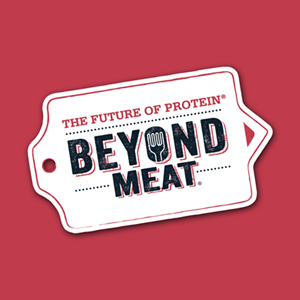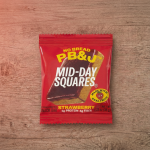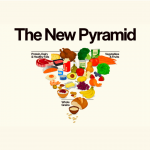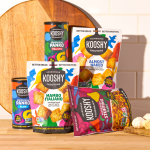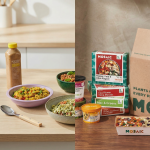Beyond Meat CEO: Company Will Pivot to Focus on Profit Over Growth
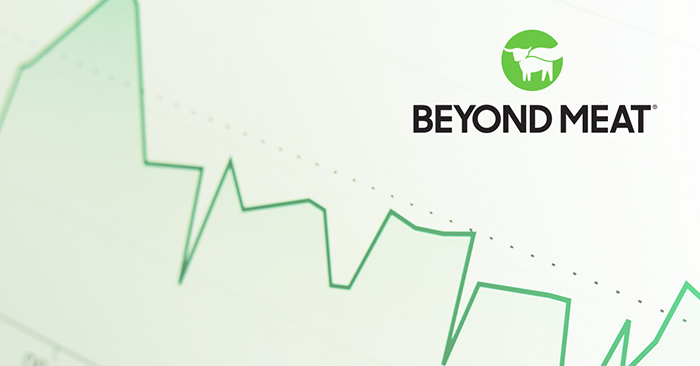
After reporting “disappointing” revenues, Beyond Meat CEO Ethan Brown told analysts on the company’s third quarter earnings call that he is taking “aggressive measures” to right the ship at the plant-based meat brand.
Net revenue for the quarter was $82.5 million, a 22.5% drop from the same period last year, while net loss was $101.7 million. Gross profit saw a loss of $14.8 million, largely as a result of underutilization fees and costs associated with the termination of co-manufacturing agreements, of which costs surrounding Beyond Meat Jerky accounted for $5.9 million during the period.
For the full year, the company expects net revenues to come in at between $400 million to $420 million.
Category Competition is No Longer a Good Thing
For years Brown, as well as other alt-meat executives, have maintained that competition in the set would help bring more consumers into the fold. However, Brown has since switched his tune, admitting on the call that during a period of inflation, competition has proved difficult.
Shoppers, he noted, are trading down to cheaper cuts of meat and protein sources. Because Beyond Meat, like other meat alternatives, costs more than commodity beef, chicken and pork, it’s particularly affected. Over the quarter, the company saw a decrease of 12.8% in total pounds sold.
“We face an economy where blistering inflation pressure is shifting consumer behavior in the grocery store, a category where competition has dramatically increased despite a broad and precipitous category slowdown and a consumer base whose focus, understandably, has turned to fulfilling immediate basic needs over pursuing broader benefits that represent our core value proposition,” Brown said.
The results of this decrease has caused a “series of knock on effects across the revenue statement,” he added, including a reversal in planned improvements to gross margin as a result of scale, greater variability when it comes to inventory and ingredient planning and underutilization of co-manufacturing facilities.
Beyond Meat Jerky Continues to Drive Costs
The first product to come from its joint venture with PepsiCo, Beyond Meat Jerky has proved to be a trouble spot for the alt-meat producer, with adoption by consumers slower than expected. Across the portfolio of Beyond Meat products, the overall cost per pound of goods sold was $5.60 in the third quarter, compared to $4.19 last year. Beyond Meat jerky alone accounted for approximately 47 cents of the increase.
Costs associated with the jerky slowdown are compounded by Beyond’s predetermined capital contribution schedule for the JV, with $10 million invested this quarter and an additional $6.5 committed over the next two quarters.
Though the jerky contributed $30 million to the company’s revenue and finally “crossed over to a breakeven situation on margin,” those dollars are being quickly gobbled up by costs associated with termination fees and idle line time fees at jerky co-packers.
Referring to launching new products such as the jerky, which the company knew would initially be a drag on revenue, Brown said “those days are over…we’re not going to be launching any products that aren’t cash flow positive and profit dollar contributors at the onset.”
A Change in Focus
In order to right the company’s finances, Brown announced a pivot that will move Beyond’s focus from “growth at all costs” to one that prioritizes “positive cash flow and sustainable growth.”
To achieve this shift, he said, the company will follow three core principles: reducing operating expenses by working with a more narrow band of retailers and food service providers; emphasizing cash flow accretive management of its inventory with a focus on margin dollars over margin percent; and revamping sales and marketing efforts to both restore growth as well as nurture longer-term partners and opportunities.
“For now, it’s really about stabilizing the business based on a more reasonable revenue, growth trajectory….[and] in terms of making sure that we’ll see some growth in the core lines of beef, burger and dinner but again, nothing extraordinary,” Brown said.
The reduction in operating costs comes after Beyond Meat has undertaken two rounds of layoffs, with the most recent round accounting for 20% of the company’s workforce. This significantly contributed to the company’s 23% reduction in total operating expenses, which dropped from $97.8 million in the first quarter to $74.9 million in Q3.
With the assumption that purchasing levels will be lower than expected, the company has also consolidated its co-packing network in order to achieve greater volumes of scale on the manufacturing side and brought some production efforts in house. Both of these efforts should not only reduce overhead, Brown said, but also cut down on underutilized fees by co-packers.
Pricing strategies will include testing a reduction for core items in order to get closer to its animal-equivalent products. Brown said the choice will help expand both distribution as well as attract new shoppers to the brand, as well as reduce costs tied up in inventory that the company currently is holding.
“We always think about inventory as kind of ‘sleeping money,’ and you know, we need to start accessing much more of that,” Brown said. “There’s two benefits to that, right?. One is obviously you reduce inventory levels and free up the cash. But the other is that you can use some of that inventory to welcome new consumers into the brand at a time when they’re economically stressed.”
Sales and marketing efforts will still be mainly driven by innovation, but rather than investing in completely new products, Brown said Beyond will work to improve its core lineup of refrigerated burgers, beef and dinner sausage, which represent the majority of the company’s total gross revenues and retail gross revenue. To that effect, Beyond will release the fourth iteration of its flagship Beyond Burger, but executives could not commit to a timing on release.
While the refrigerated case has long been the focus of Beyond’s marketing efforts, Brown said the team will now also try to build out a brand block in frozen with its chicken tenders and sliced steak. Market efforts will also be focused on “those consumers that are most able to hear us during these difficult economic times,” Brown said. Part of the struggle in reaching consumers, he believes, is due misperceptions surrounding meat alternatives.
“We’ve allowed special interest groups to have a field day seeding doubt about the health profile of what they call ‘fake meat,’” he said. “We need to do a better job helping the consumer better understand the connection between our products and climate. Again, focusing on the right consumer at the right time, when we have the greatest chance of being heard.”
Looking more specifically at consumer demographics, messaging around health will be targeted towards shoppers over 40, while messaging around sustainability and climate effects will be for younger consumers.
Taken together, Brown said these three efforts will help the company achieve cash flow positive operations on a more accelerated schedule to within the second half of 2023.
“I have no doubt about the long-term opportunity facing our company and our ability to go get it. We continue to produce the very best products,” Brown said. “But what we have to do now is change our mindset from one where it was ‘growth above everything else’ to now pushing very quickly the business into the cash flow positive and profitable position.”
